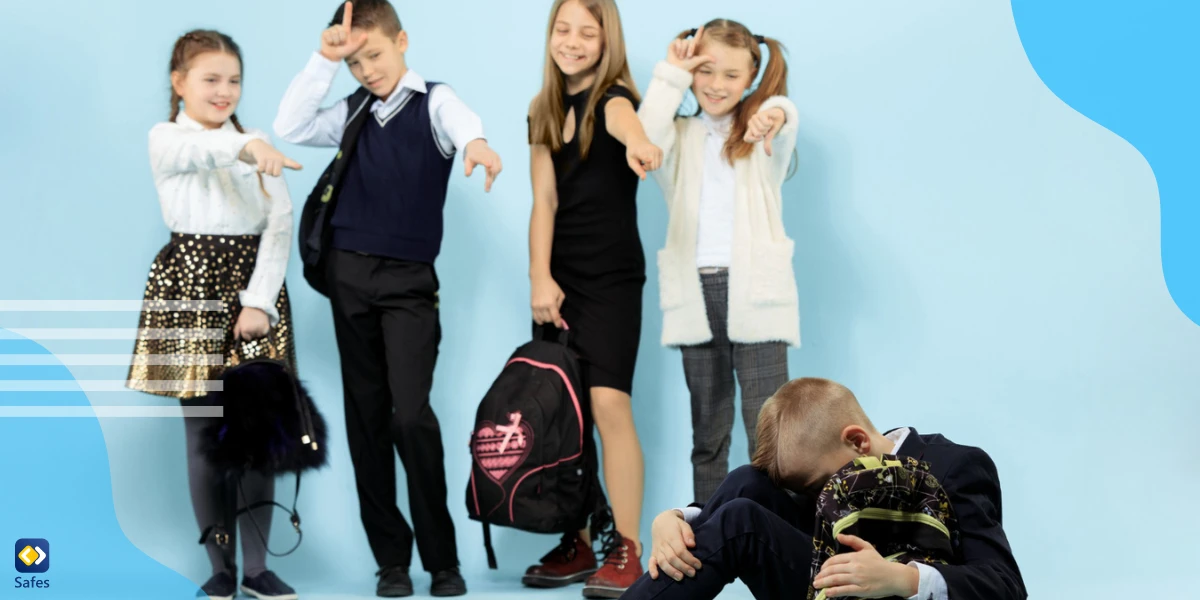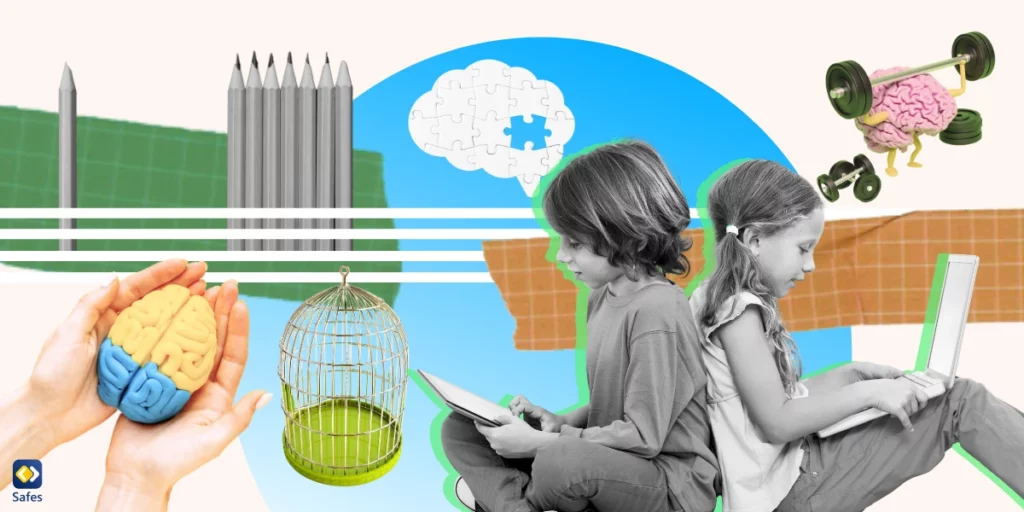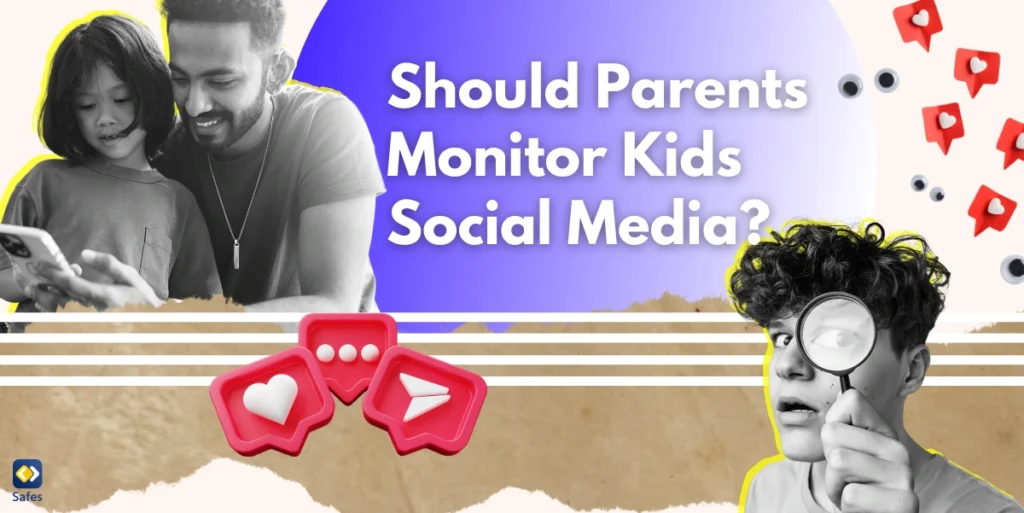Social withdrawal among children has become a growing concern for parents and educators alike. But what exactly is social withdrawal? In this article, we will define social withdrawal and delve into its impact on children’s development. Moreover, we will explore the crucial role parental support plays in addressing this issue. Additionally, we will shed light on the connection between social withdrawal and excessive technology use, emphasizing the need for a balanced approach in a tech-driven world. So, let’s discover effective strategies to help children overcome social withdrawal and foster healthy social connections.
Download and Start Your Free Trial of the Safes Parental Control App
Signs and Symptoms of Social Withdrawal
Social withdrawal refers to a behavior pattern where children consistently isolate themselves and withdraw from social interactions. This withdrawal can significantly impact their emotional well-being, academic performance, and relationships.
Children who are socially withdrawn may exhibit various emotional and behavioral indicators. These symptoms can manifest differently in each child, but some common signs include:
Avoiding Social Situations: Children may consistently avoid social situations, such as recess or group activities, and prefer to be alone.
Extreme Shyness: They may display excessive shyness and discomfort in social settings, struggling with initiating or maintaining conversations.
Limited Eye Contact: Socially withdrawn children may avoid making eye contact with others, which can hinder effective communication and connection.
Non-Verbal Cues: They may exhibit closed-off body language, such as crossed arms, hunched posture, or a tendency to look down, signaling a lack of engagement.
Frequent Daydreaming: Children who withdraw from friends may often appear lost in their thoughts, daydreaming, and not actively participating in their surroundings.
Socially withdrawn children often face challenges when it comes to social interactions. Some common difficulties they may experience include:
Building and Maintaining Friendships: Withdrawing from friends can lead to difficulties in forming and maintaining meaningful friendships, making it harder for them to develop a support network.
Poor Communication Skills: Social withdrawal may contribute to limited communication skills, resulting in challenges in expressing themselves and understanding others.
Low Self-Esteem: The lack of social interaction can negatively impact a child’s self-esteem, leading to feelings of loneliness, inadequacy, and a heightened sense of self-consciousness.

Impact of Social Withdrawal on Children
When children engage in withdrawing behavior and experience social withdrawal, it can have significant emotional and psychological consequences. These consequences can have long-term effects on their social development and overall well-being.
Emotionally, social withdrawal can lead to feelings of loneliness, sadness, and a lack of belonging. Children may struggle with low self-esteem and have difficulty forming positive relationships with their peers. They may also experience increased levels of anxiety and depression due to their isolation and lack of social support.
Psychologically, social withdrawal can hinder the development of important social skills. Children who consistently withdraw from social interactions may struggle with communication, problem-solving, and conflict resolution. These skills are crucial for building healthy relationships and navigating social situations later in life.
The long-term effects of social withdrawal can be far-reaching. Children who consistently withdraw from social interactions may struggle with forming meaningful friendships and maintaining healthy relationships as adults. They may also have difficulties in academic settings, as social interaction is often essential for learning and collaboration.
Additionally, social withdrawal can impact a child’s overall well-being. It can lead to a lack of social support, which is crucial for emotional and mental health. Children who withdraw from social interactions may miss out on opportunities for personal growth, self-discovery, and the development of a strong support network.
Causes of Social Withdrawal
Social withdrawal in children can be caused by a combination of psychological and environmental factors. On a psychological level, social withdrawal can sometimes be a sign of depression or anxiety in children. It is important to note that not all socially withdrawn children are necessarily depressed, but social withdrawal can be a red flag for underlying mental health issues.
Social withdrawal can also stem from environmental factors, such as a lack of social support or negative experiences in social settings. Children who have experienced bullying or rejection from their peers may develop a fear of social interactions, leading to withdrawal. Additionally, children who have experienced trauma or have low self-esteem may also be more prone to social withdrawal.
Now, let’s talk about the role of technology in social withdrawal. With the rise of digital devices and social media, excessive technology use has been linked to increased social withdrawal in children. While technology can provide opportunities for social connection, it can also lead to isolation and withdrawal when used in an unbalanced manner.
As Dr. Michael Messina, cognitive behavior therapist, has shown in his article, excessive screen time can negatively impact social skills development and reduce face-to-face interactions. Children who spend excessive time on screens may struggle with building and maintaining meaningful relationships, as they may rely more on virtual interactions rather than real-life connections.
Moreover, the constant exposure to curated and idealized online personas can contribute to feelings of inadequacy and social comparison, further fueling social withdrawal. The fear of missing out (FOMO) can also play a role, with children feeling left out or excluded if they are not constantly connected to social media.
However, it is important to note that technology itself is not the sole cause of social withdrawal. It is the excessive and unbalanced use of technology that can contribute to social withdrawal symptoms. Therefore, finding a healthy balance between screen time and real-life social interactions is crucial for children’s social development.

How to Overcome Social Withdrawal?
It is crucial to address withdrawing behavior early on and provide children with the necessary support and resources to overcome social withdrawal. In the following, we will give you some terrific strategies to help your little one break out of their shell and overcome social withdrawal.
Strategies to Help Children Overcome Social Withdrawal
Open communication and support: First things first, create a safe and supportive environment for your child. Encourage open communication and let them know that you’re there to listen and support them. By being a trusted confidant, you’ll help them feel more comfortable opening up about their feelings and experiences.
Encouraging social skills development: Social skills are like superpowers when it comes to breaking out of that shell. Help your child develop these skills by providing opportunities for social interaction. Encourage playdates, join clubs or groups, and even engage in role-playing activities to practice different social scenarios. With a bit of practice, they’ll be socializing like a champ in no time!
Balancing technology use and real-world interactions: In this digital age, it’s easy for kids to get lost in their screens and miss out on real-world interactions. Encourage a healthy balance by setting limits on screen time and encouraging them to engage in face-to-face interactions. Get them involved in activities that promote socializing, like team sports or community events. Together, you can find the right balance between the virtual and real world.
Seeking professional help when necessary: Sometimes, social withdrawal may be more than just shyness. If your child’s social withdrawal persists or is accompanied by severe emotional distress, it may be time to seek professional help. A qualified therapist or counselor can provide the necessary support and guidance to help your child navigate their social challenges.
Every child is unique, so be patient and understanding as you implement these strategies. With your love and support, your child will be well on their way to embracing social interactions and finding their place in the world.
Role of Parental Control Apps in Addressing Social Withdrawal
Parental control apps play a crucial role in addressing social withdrawal in children by helping parents monitor and manage their children’s screen time. One practical and efficient option is the Safes parental control app. With its screen time monitoring and managing tools, Safes allows you to set healthy boundaries and limits for your child’s device usage.
By promoting alternative activities and social engagement, Safes helps children overcome social withdrawal and develop healthier tech habits. Safes is available on Android, iOS, Windows, and Mac platforms, so if you want to learn how to set parental controls on these platforms using Safes, follow the links below:
- Windows parental controls
- Macbook parental controls
- Parental controls on Android
- iPhone parental controls
To explore Safes and see how it can enhance your child’s digital experience, consider starting a 14-day free trial—no payment details required.
Social Withdrawal in Children: Conclusion
Addressing social withdrawal in children is crucial for their overall development and well-being. By understanding the emotional and behavioral indicators of social withdrawal, the role of technology in exacerbating symptoms, and the long-term consequences on social development, you can take proactive steps to support your child. Open communication, encouraging social skills development, balancing technology use, and seeking professional help when necessary are all effective strategies. Additionally, parental control apps like Safes can provide a practical solution to monitor and manage screen time, set healthy boundaries, and promote alternative activities and social engagement. Together, we can help children overcome social withdrawal and create a supportive and inclusive environment for their growth.
Your Child’s Online Safety Starts Here
Every parent today needs a solution to manage screen time and keep their child safe online.
Without the right tools, digital risks and excessive screen time can impact children's well-being. Safes helps parents set healthy boundaries, monitor activity, and protect kids from online dangers—all with an easy-to-use app.
Take control of your child’s digital world. Learn more about Safes or download the app to start your free trial today!




